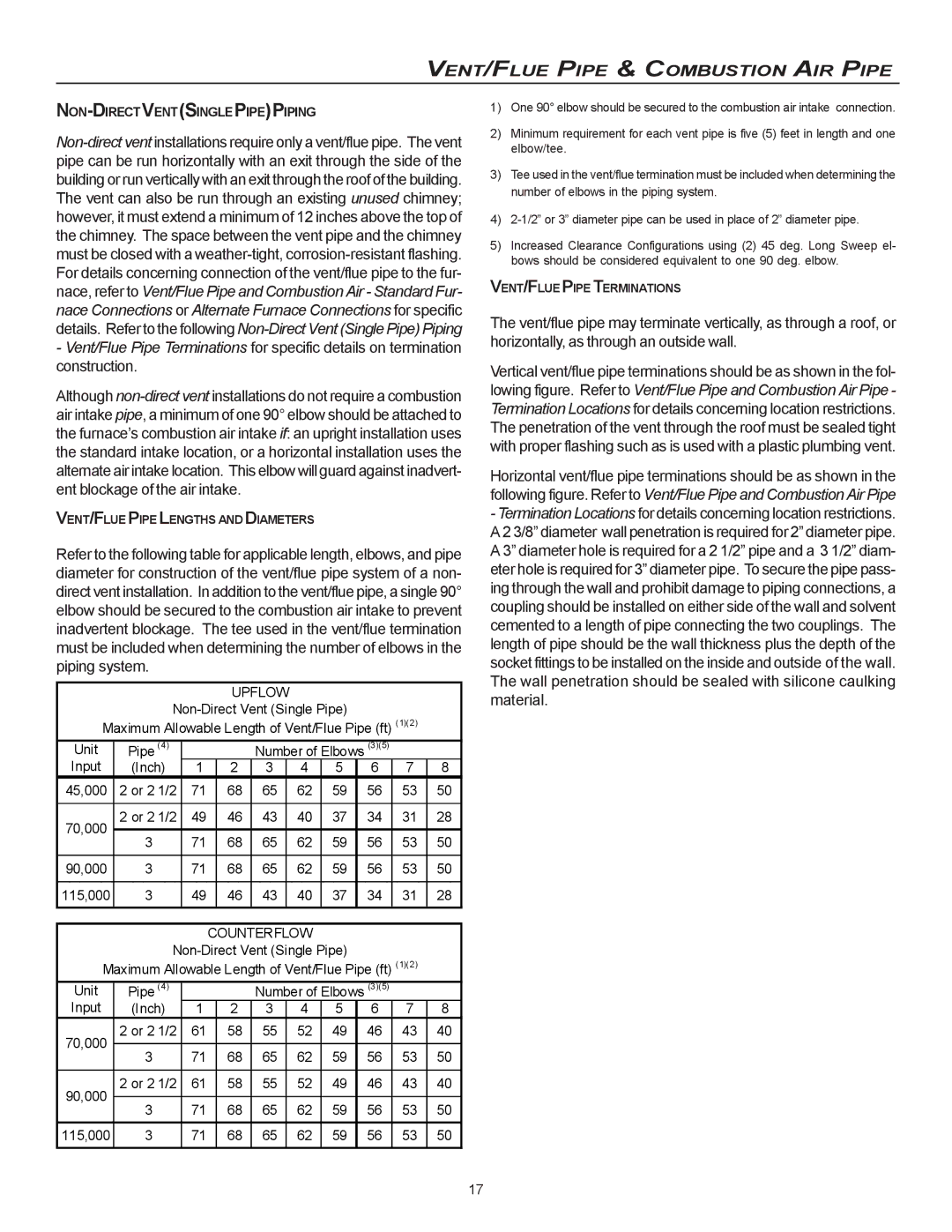MVC95, CVC9/95 specifications
Goodman Manufacturing has established itself as a leader in the HVAC industry, and among its stellar lineup, the Goodman CVC9/95 and MVC95 stand out for their remarkable features, technologies, and efficiency.The Goodman CVC9/95 is a high-performance gas furnace, designed for homeowners seeking reliability and cost-effective heating solutions. It operates with an impressive 95% Annual Fuel Utilization Efficiency (AFUE), which means that a significant portion of the fuel it consumes is converted into heat. This level of efficiency not only contributes to lower energy bills but also reduces greenhouse gas emissions, making it an environmentally friendly choice.
One of the standout features of the CVC9/95 is its multi-speed ECM blower motor. This technology adjusts the airflow according to the heating demands of the home, ensuring consistent and comfortable temperatures. The ECM motor also operates quietly, enhancing the comfort of your living space without the disruptive noise often associated with traditional furnaces.
The MVC95, on the other hand, offers similar efficiency with its also 95% AFUE rating. This model is equipped with a patented ignition system that enhances reliability with minimal maintenance needs. Its durable construction includes a heavy-gauge steel cabinet and an insulated blower compartment that minimizes heat loss. This design not only supports optimal performance but also contributes to its longevity.
Both models come with a self-diagnostic control board that provides straightforward troubleshooting capabilities, making it easier for technicians to ensure that your system is operating at peak performance. This feature aids in timely maintenance, which is crucial for extending the lifespan of the unit.
Additionally, Goodman backs their products with a strong warranty, offering a lifetime limited warranty on the heat exchanger and a 10-year limited parts warranty. This assurance provides homeowners peace of mind regarding their investment.
In the landscape of HVAC solutions, the Goodman CVC9/95 and MVC95 models exemplify a commitment to quality, efficiency, and advanced technology. Whether for new constructions or replacements, these furnaces offer superior heating performance coupled with modern conveniences, making them an invaluable choice for homeowners seeking effective climate control solutions. With their low emissions and high efficiency, choosing Goodman means investing in both comfort and sustainability.

